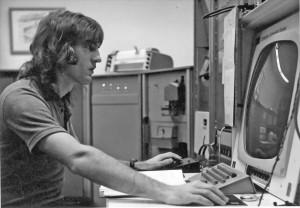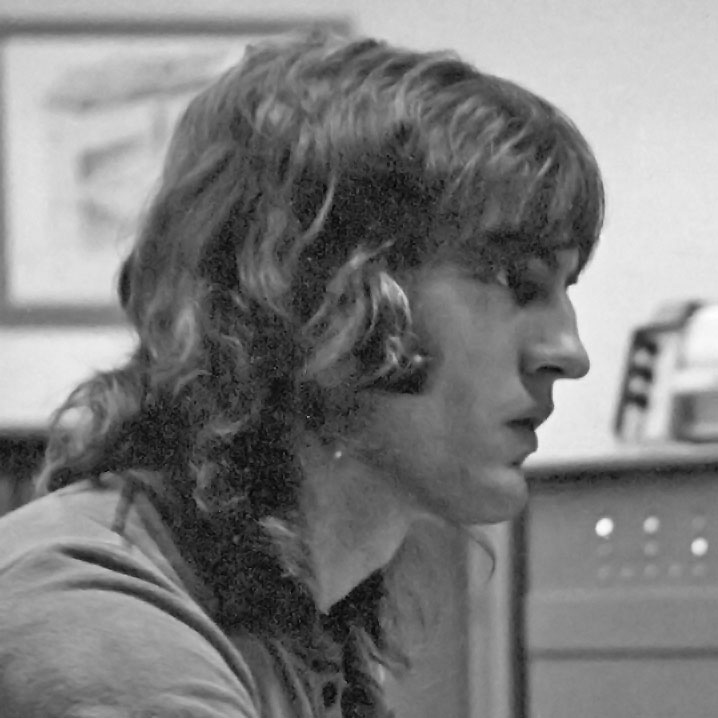William (Bill) Buxton is a Canadian digital media pioneer in the field of Human-Computer Interaction (HCI). As a prolific researcher, designer, inventor and teacher, Bill has devoted over three decades to improving the human factors of technology and advocating for the importance of design in digital media products and systems.
Perhaps best known for his work in pioneering multi-touch systems and novel user interface designs for computer music systems, Bill’s early research paved the way for the track-pads and touch-screens that are ubiquitous today. Now a Principal Researcher at Microsoft, he has earned international recognition over the years for his often radical approaches to design and innovation that take into account human values, and the individual, social and cultural experiences that products provoke. Named one of the top five designers in Canada by Time Magazine, Bill was one of the first dozen recipients of ACM SIGCHI’s most prestigious honour, a Lifetime Achievement Award for contributions to the field of HCI.
Bill was introduced to HCI in the early 1970s while an undergraduate studying music at Queen’s University. Encouraged by one of his instructors, he became part of a project that was developing a digital music system at the National Research Council of Canada in Ottawa. There he discovered the groundbreaking work of early computer animator Peter Foldes, which piqued his fascination with the power of computers. As a professional musician, Bill was drawn to the role of electronics and computers in musical composition and performance. He became an “artist-in-residence” at the University of Toronto’s Department of Computer Science where he designed his own digital musical instruments. Upon completing his MSc in 1975, he joined the faculty, where he remains an Adjunct Professor.

Bill began an active and prolific career in experimental research exploring new user interface design techniques and led the Input Research Group (IRG) at U of T. He is a frequent contributor to the CHI, UIST, SIGGRAPH, Multimedia, and other conferences, as well as to books and journals. His 1985 paper on the capacitive multi-touch tablet was the first ever in the peer-reviewed literature to discuss a multi-touch device. He holds over 20 patents on these and other techniques.
In the late 1980s and early 90s, Bill was a research consultant for Xerox PARC and EuroPARC, where he worked with Mark Weiser developing the nascent concepts of ubiquitous computing, and also for Apple. He later became Chief Scientist for Toronto-based Alias|wavefront (now part of Autodesk), where he collaborated with prominent film makers and designers, and helped develop a robust painting program that is still used by artists and designers today.
Bill’s numerous publications attest to his diverse interests: from music and the arts, to articles on exploration, history and mountaineering, to the subtleties of the equestrian arts. His 2007 book, Sketching User Experiences, is a major work in the theory and practice of holistic design.
Bill is widely known as a gifted and articulate speaker. His lectures have inspired countless students and colleagues. As an impassioned spokesperson for HCI and design, Bill has helped raise the awareness and importance of the field.
Through his leadership and provocative ideas, Bill Buxton has helped shape modern design to better reflect human values and experience. His vision and inventions have transformed the way we interact with computers. In acknowledgement of his numerous contributions to the field of Human-Computer Interaction, Bill Buxton has been recognized as a Canadian Digital Media Pioneer.
Biography
Born in 1949, William “Bill” Buxton is a musician and composer. He completed a BSc in music from Queen’s University, then studied and taught music for two years at the Institute of Sonology in Utrecht, Netherlands, before returning to Canada. Bill earned an MSc in computer science at the University of Toronto, and then joined the faculty as an Adjunct Professor. From 1987-89, Bill was in Cambridge, England, helping establish a new satellite of Xerox’s Palo Alto Research Center (EuroPARC). From 1989-94 he split his time between Toronto, where he was Scientific Director of the Ontario Telepresence Project, and Palo Alto, California, where he was a consulting researcher at Xerox PARC. From 1994 until December 2002, he was Chief Scientist of Alias|wavefront, (now part of Autodesk) and from 1995, its parent company SGI Inc. From 1998-2004, Bill was on the board of the Canadian Film Centre, and in 1998-99 chaired a panel to advise the Premier of Ontario on developing long-term policy to foster innovation, through the Ontario Jobs and Investment Board. In the fall of 2004, he became a part-time instructor in the Department of Industrial Design at the Ontario College of Art and Design. In 2004/05 he was also Visiting Professor at the Knowledge Media Design Institute (KMDI) at the University of Toronto. He later became Principal of his own Toronto-based boutique design and consulting firm, Bill Design. In 2005, he was appointed Principal Researcher at Microsoft Research.
Bill is the recipient of four honorary doctorates, and a co-recipient of an Academy Award for Scientific and Technical Achievement. In 2008, Bill also became the tenth recipient of the distinguished ACM SIGCHI Lifetime Achievement Award, “for fundamental contributions to the field of Computer Human Interaction,” and in January 2009, he was elected Fellow of the Association of Computing Machinery (ACM), for his contributions to the field. Bill is presently an Adjunct Professor at the University of Toronto and Distinguished Professor of Industrial Design at the Technical University Eindhoven. He also writes a regular column in BusinessWeek.
Selected Works
MacKenzie, I.S., Sellen, A. & Buxton, W. (1991). A comparison of input devices in elemental pointing and dragging tasks, Proceedings of CHI ’91, ACM Conference on Human Factors in Software, 161-166. Link
Lee, S., Buxton, W. & Smith, K.C. (1985). A Multi-Touch Three Dimensional Touch-Sensitive Tablet. Proceedings of the 1985 Conference on Human Factors in Computer Systems, CHI ’85, San Francisco, April, 1985, 21-26. PDF
Buxton, W. (1997). Living in Augmented Reality: Ubiquitous Media and Reactive Environments. In K. Finn, A. Sellen & S. Wilber (Eds.). Video Mediated Communication. Hillsdale, N.J.: Erlbaum, 363-384. An earlier version of this chapter also appears in Proceedings of Imagina ’95. Link
Buxton, W. (1986). Chunking and Phrasing and the Design of Human-Computer Dialogues, Proceedings of the IFIP World Computer Congress, Dublin, Ireland, 475-480. PDF
Photo courtesy of the National Research Council






 Bill Buxton at the NRC.
Bill Buxton at the NRC.